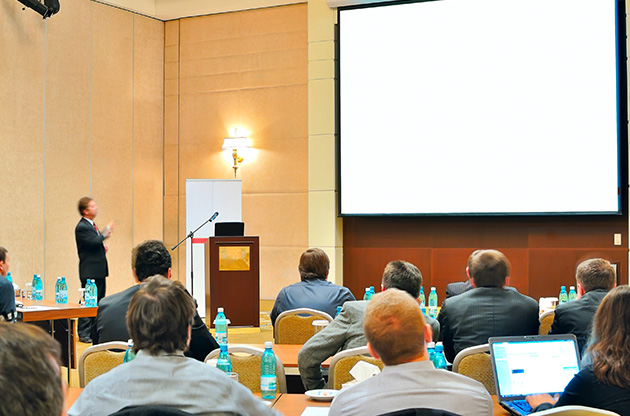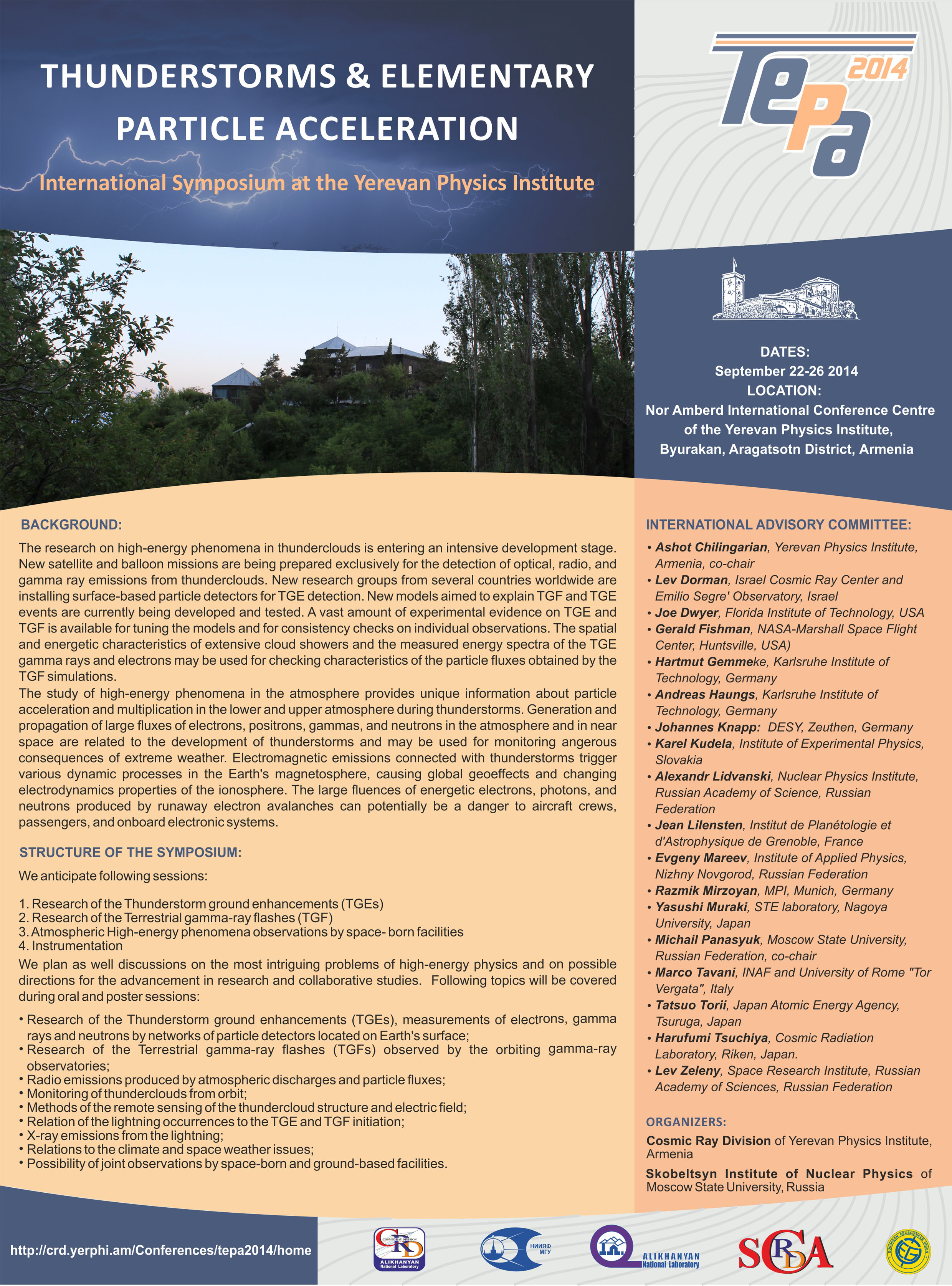2014
WebSite : http://www.egu2014.eu/home.html
Location : Austria Center Vienna (ACV) in Vienna, Austria
The program you can download soon .
The EGU General Assembly 2013 will bring together geoscientists from all over the world into one meeting covering all disciplines of the Earth, Planetary and Space Sciences. Especially for young scientists, it is the aim of the EGU to provide a forum where they can present their work and discuss their ideas with experts in all fields of geosciences. The assembly is open to the scientists of all nations.
Levon Vanyan : “The Origin of Thunderstorm Ground Enhancements (TGEs): Energy Spectra Analysis”.
WebSite : http://tea-is-2014.cnrs-orleans.fr/
The goal of the TEA-IS Summer School is to provide information to scientists interested in studies to better understand the role of thunderstorms in the atmosphere-ionosphere-magnetosphere system. The school includes both lectures and hands-on exercises (using on going observations and satellite data processing). The school will encourage discussions between students and senior scientists and scientific collaborations between different research groups.
The goal of the conferens: The research on high-energy phenomena in thunderclouds is entering an intensive development stage. New satellite and balloon missions are being prepared exclusively for the detection of optical, radio, and gamma ray emissions from thunderclouds. New research groups from several countries worldwide are installing surface-based particle detectors for TGE detection. New models aimed to explain TGF and TGE events are currently being developed and tested. A vast amount of experimental evidence on TGE and TGF is available for tuning the models and for consistency checks on individual observations. The spatial and energetic characteristics of extensive cloud showers and the measured energy spectra of the TGE gamma rays and electrons may be used for checking characteristics of the particle fluxes obtained by the TGF simulations.
website: http://www.icssnp.mephi.ru/en
website: http://fallmeeting.agu.org/2014/


